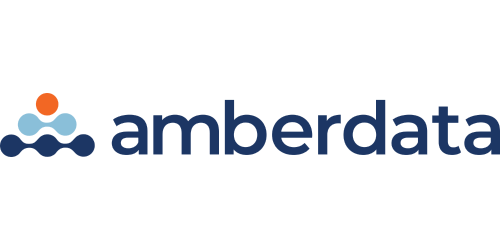
The digital asset market is in the midst of a seismic shift. Long-held beliefs about the way assets are created, stored and traded have been shaken by the rise of blockchain networks, crypto markets and decentralised finance.
Although this has created big opportunities, it has also introduced serious challenges – including how to successfully navigate such a fast-moving and fragmented market.
“There are so many moving pieces,” says Tongtong Gong, co-founder and chief operating officer of Amberdata, the leading digital asset financial infrastructure provider.
“So as a financial institution, you first have to figure out your strategy and roadmap for adopting crypto assets and offering services. Are you just going to participate in some Bitcoin trading, for example? Or do you want a more ambitious foothold in this space?”.
Doing this successfully is challenging enough. But financial institutions also need to work out how to collect and normalise the data they need to capitalise on opportunities.
Today, many of them lack the right tools for the job. In fact, fragmentation across multiple blockchain networks, protocols and exchanges has created a level of market complexity that TradFi infrastructure built for centralised markets struggles to handle.
Different blockchain networks operate on different consensus mechanisms and design philosophies, for example.
Even within single blockchains like Ethereum, multiple protocols exist for token standards, lending, trading and derivatives – each with different smart contract structures and risk profiles.
To complicate things further, TradFi institutions are now converting real-world assets like real estate, art and commodities into digital tokens that can be sold, held and traded.
“There’s a lot of noise and institutions can’t keep up with everything,” says Gong. “There are hundreds of different blockchains, thousands of different assets.”
Comparing all these markets, blockchains and asset types to derive insights is time-consuming, costly and potentially confusing. Integrating digital asset research with traditional finance analytics also creates friction and slows down workflows, as crypto markets move much faster than traditional ones.
As a result, most legacy systems simply cannot keep up with the huge volumes of data generated by the digital asset market, leading to processing delays and inaccuracies.
Different departments and teams must also be aligned around the same reliable information to stay efficient and compliant. Yet, fragmented tools for trading, analytics and reporting can hinder both real-time decision-making and efforts to stay on the right side of fast-evolving regulations.
Dedicated infrastructure for digital assets
However, with the market capitalisation of digital assets already running to trillions of dollars, financial firms cannot afford to let complexity stand in the way of success.
To operate with speed, insight and confidence, they must standardise and analyse fragmented data from across the digital assets market.
Despite this, financial institutions that attempt to build the infrastructure for this themselves often run into difficulties.
Integrating granular data from multiple blockchains and DeFi protocols requires significant technical expertise, for example.
Scaling data storage and processing to cover high-frequency transactions in volatile, 24/7 digital asset markets can also strain existing infrastructure to the limit.
“You need a good partner to build the information infrastructure that will help you to excel in the [digital asset] space,” says Gong.
“Some of the easiest sales that we’ve ever made are to people that have tried to do it themselves…they quickly realise that they want to focus on figuring out what they want to do, [not the technical challenges around infrastructure].”
As the backbone of digital asset operations, Amberdata provides an integrated suite of end-to-end digital asset infrastructure solutions that can standardise and analyse vast amounts of fragmented market data.
This enables institutions to act decisively and seize opportunities in a complex market.
By normalising data across blockchains and crypto markets, for example, Amberdata’s solutions allow firms to perform rigorous comparisons between different assets and track them across the full trading lifecycle.
They also connect to centralised exchanges, DeFi protocols, and traditional markets, offering seamless interoperability and unified data access.
Their market intelligence platform, AmberLens, is designed to make insight accessible, for instance.
It provides ETF flows, institutional metrics, stablecoin analytics, and trend analyses, and it aims to “connect the dots” and spark that “light bulb moment” for institutions that don’t yet know what they should be focusing on in the digital asset market.
“It’s completely open to everyone to access,” says Gong. “You don’t need a login, you don’t need to pay for seats.”
Amberdata Derivatives, meanwhile, provides analytics across the futures and options landscape, which has experienced “phenomenal” growth over the past two years, according to Gong.
As the first open-source digital asset mapping and security master, Amberdata’s Asset Reference and Classification (ARC) also solves one of the trickiest infrastructure problems for financial firms: accurately identifying digital assets.
ARC is an institutional-grade security master database that helps institutions keep track of thousands of digital assets by giving each one a clear identity and organising them in a consistent, logical way.
This means that trading, compliance and accounting teams can all refer to the same information without confusion. In other words, it turns messy, fragmented asset data into clean, structured information that teams spanning the front, middle and back office can use at scale.
Amberdata is also SOC 1 and SOC 2 compliant, so it is monitored against the five Trust Services Criteria – processing integrity, security, availability, confidentiality and privacy – which evaluate the design and operational effectiveness of an organisation’s information security program.
This makes it a truly trusted provider of institutional-grade digital asset data, market intelligence and compliance solutions, offering leaders scalability while focusing on core business – something that’s still quite rare in the crypto space.
“That’s where we stand out, as our customers really care about compliance,” Gong explains.
These customers include a wide spectrum of institutions, such as asset managers, central banks, investment banks, corporate treasuries, trading desks, wealth managers, venture capitalists and even regulators.
There’s now more interest in digital assets than ever before – partly because “all the headwinds have become tailwinds,” says Gong.
With a partner like Amberdata, financial institutions will have the infrastructure and expertise they need to successfully capitalise on them and transform market complexity into a strategic advantage.
For more information, please visit: https://www.amberdata.io/

The digital asset market is in the midst of a seismic shift. Long-held beliefs about the way assets are created, stored and traded have been shaken by the rise of blockchain networks, crypto markets and decentralised finance.
Although this has created big opportunities, it has also introduced serious challenges – including how to successfully navigate such a fast-moving and fragmented market.
"There are so many moving pieces," says Tongtong Gong, co-founder and chief operating officer of Amberdata, the leading digital asset financial infrastructure provider.

